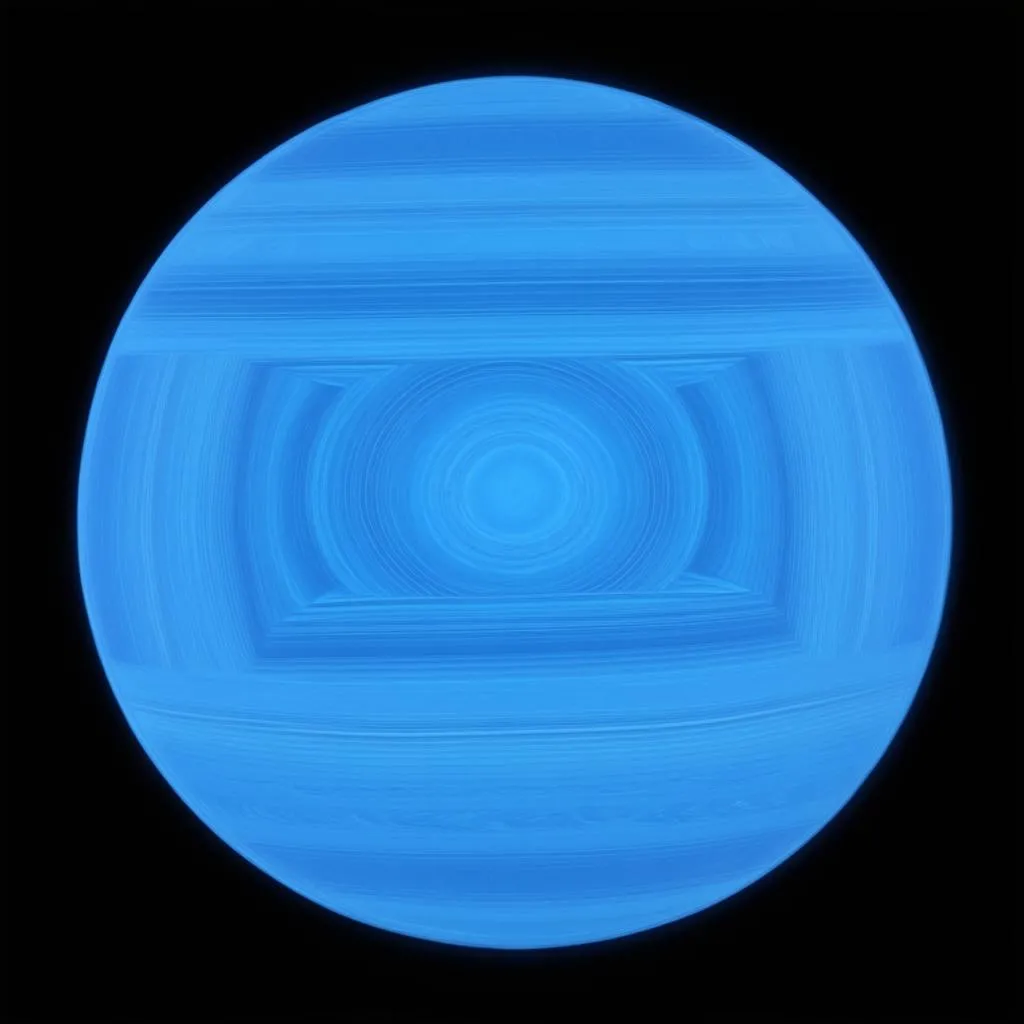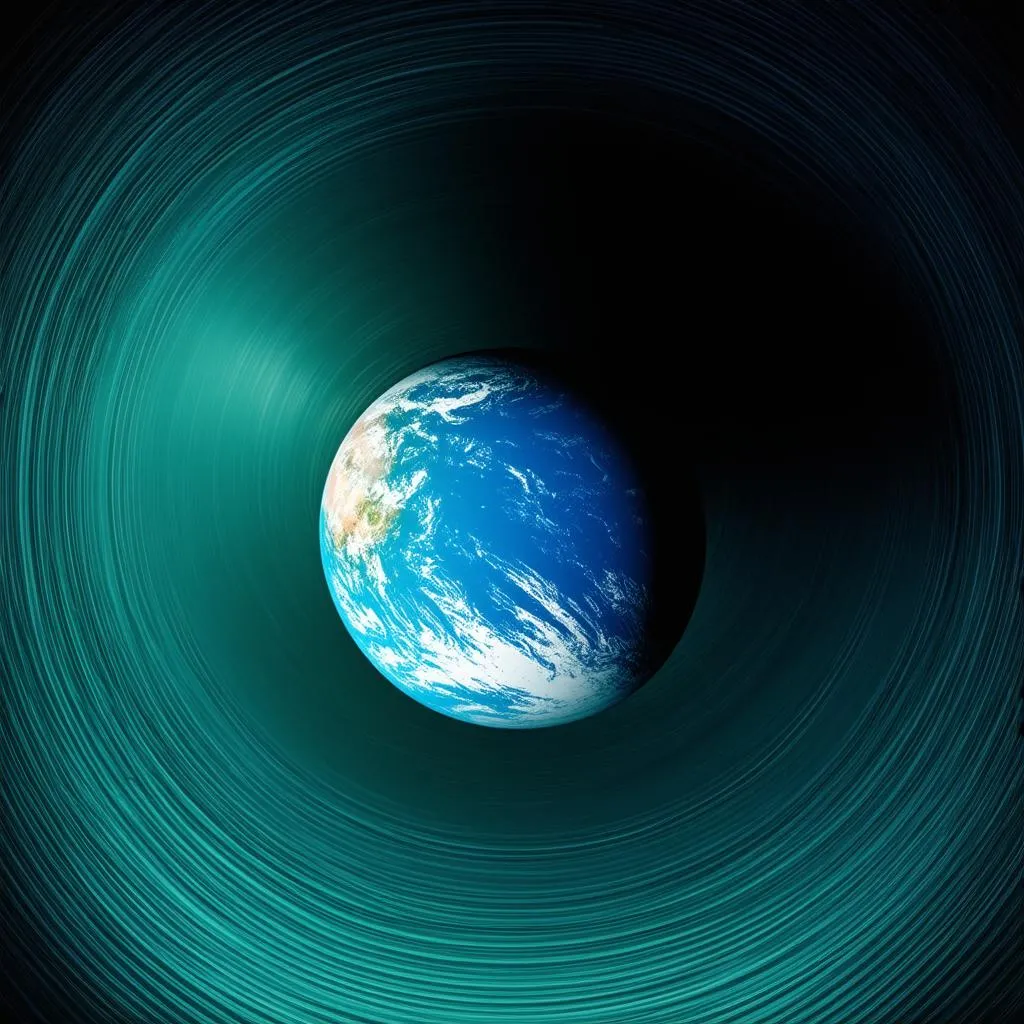Have you ever gazed up at the night sky and felt the pull of the unknown? What secrets do those twinkling lights hold? While a vacation to the stars might seem like science fiction, let’s take a journey of the imagination to our distant planetary neighbors, Neptune and Uranus, the ice giants of our solar system.
Unveiling the Mysteries: Neptune and Uranus
These two blue behemoths might seem similar at first glance, but they hold unique allure for the cosmic traveler.
Neptune: The Realm of Azure Winds
Neptune, named after the Roman god of the sea, is a swirling blue giant known for its ferocious storms. Imagine standing on a hypothetical moon, watching massive, earth-sized storms rage across the planet’s surface.
- Points of Interest: Neptune’s Great Dark Spot, a massive storm system, was a highlight for early observers. Though it has since disappeared, new storms are constantly brewing.
- Did you know? Neptune has 14 known moons, the largest of which, Triton, is geologically active and orbits the planet in the opposite direction of its rotation.
Uranus: The Sideways World
Uranus, named for the Greek god of the sky, is unique for its sideways rotation. Imagine a planet where the sun barely sets for decades at a time, followed by decades of darkness.
- Points of Interest: Uranus’s rings, though fainter than Saturn’s, are composed of dark particles thought to be remnants of a shattered moon.
- Fun Fact: Uranus is tilted on its side, perhaps due to a colossal collision in its past. This makes for extreme seasons, with each pole experiencing 42 years of continuous sunlight followed by 42 years of darkness.
 Neptune
Neptune
Planning Your Interplanetary Trek: What to Expect
While current technology doesn’t allow for a physical trip to Neptune and Uranus, we can still prepare for this hypothetical journey:
- Travel Time: Pack your patience! These icy giants are incredibly distant. Voyager 2, the only spacecraft to have visited both planets, took 12 years to reach Neptune from Earth.
- Suit Up: You’ll need a spacesuit designed for extreme cold and pressure. Temperatures on Uranus and Neptune can plummet to hundreds of degrees below zero.
- Pack Your Bags: Bring along a high-powered telescope for incredible views of these distant worlds. Don’t forget a journal to record your cosmic observations!
FAQ: Your Burning Questions Answered
Q: Is there any chance of finding life on Neptune or Uranus?
- A: While the possibility of life as we know it is slim due to the extreme conditions, these planets hold vast oceans of water beneath their atmospheres, potentially harboring unique lifeforms.
Q: What are the winds like on Neptune?
- A: Hold onto your hat! Neptune boasts the fastest wind speeds in the solar system, reaching over 1,200 miles per hour.
Cosmic Connections: Feng Shui and Your Journey
In Feng Shui, the north area of your home is associated with career and life journey. Consider placing a picture of Neptune or Uranus in this area to inspire a sense of exploration and expansion in your own life. Remember, even if we can’t physically travel to these planets, the act of learning about them expands our understanding of the universe and our place within it.
 Uranus with Rings
Uranus with Rings
Journey Further with Travelcar.edu.vn
Eager to delve deeper into the cosmos? Travelcar.edu.vn offers a wealth of resources for the aspiring space explorer. Explore the wonders of our solar system and beyond! You might enjoy reading about “A Spaceship Travels in Our Solar System” (https://travelcar.edu.vn/a-spaceship-travels-in-our-solar-system/) for a broader perspective on space exploration.
Neptune and Uranus, the icy giants of our solar system, beckon with their enigmatic beauty and untold mysteries. While a physical journey might remain a dream for now, let your imagination take flight as you explore the wonders of the cosmos. What adventures await in the vast expanse of space?